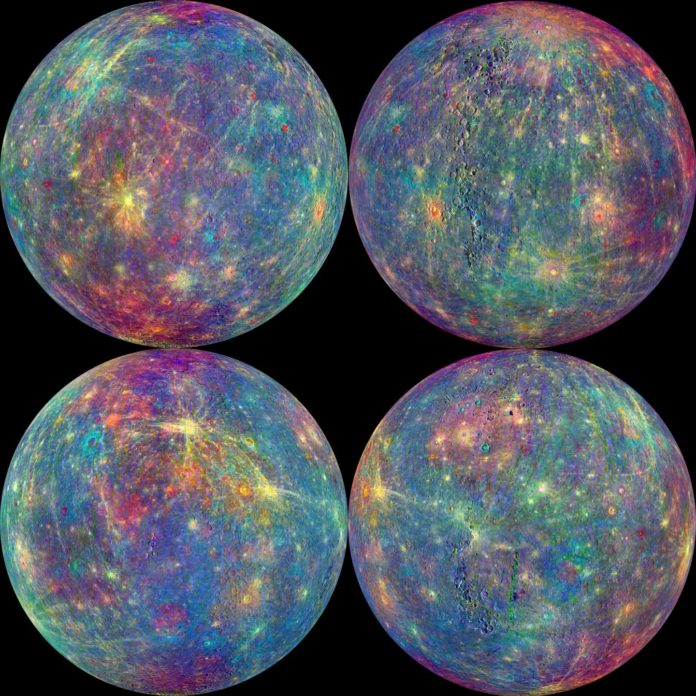Mercury may be a relatively small planet in comparison to our own, with very little to call an atmosphere, but where it lacks in size, it offers something else – strange weather in the form of morning micro-meteor showers. Data captured from NASA’s MESSENGER (Mercury Surface, Space Environment, Geochemistry and Ranging) spacecraft revealed how the lopsidedness of Mercury’s surface is largely down to certain types of comet and dust particles called micrometeoroids. It also gave researchers new insight as to how micrometeoroid showers can help shape the planet’s exosphere too.
The research involved carrying out simulations of the various meteoroid impacts that may come about and saw that there was a pattern as to what time of day these impacts would occur. “Observations by MESSENGER indicated that dust must predominantly arrive at Mercury from specific directions, so we set out to prove this with models,” said researcher leader, Petr Pokorny. We simulated meteoroids in the solar system, particularly those originating from comets, and let them evolve over time.”
Previous findings from data based on MESSENGER’s Ultraviolet and Visible Spectrometer showed how the effect that these meteoroid impacts have on the planet’s surface. It also indicated that the impacts were much more frequent on whatever part of the planet was experiencing dawn at the time. Mercury’s dawn-dusk asymmetry is created partly due to the planet’s long day in comparison to its year, and partly because many meteoroids travel around the Sun in the opposing way to that of the planets.
Mercury rotates much slower than the Earth, and as a result, it spends much of the planet at dawn spends its time in the path of micrometeoroid populations called retrograde meteoroids. These orbit the sun in the opposite direction to that of the planets and are made up of long-period comets. Because they flow in the opposite direction, collisions between them happen with much more force than if they were both going the same way. It’s these collisions that have enabled researchers to hone in on the source of the micrometeoroids.
Those meteoroids that come from asteroids don’t move fast enough to create the kind of impacts that the researchers observed. The only type of meteoroids that do is from either Jupiter-family comets or Halley-type comets. Jupiter-family type comets have a short orbit of fewer than 20 years and are primarily influenced by gravity. Halley-type comets, on the other hand, have a much longer orbit of 200 years plus. Both are ideal candidates to produce those meteoroids that help make Mercury’s exosphere the way it is.
More News to Read
- New Joint Initiative Between Imperial and Kings College London Boosts Artificial Cell Design
- Check Out New Features of Mars Rover 2020
- Astronomers Image Material That Obscures Black Holes
- A New Concept of Terrestrial Planet Formation Proposed
- Hydrogel Casts Could Become the New Way to Control Bleeding Disorders

